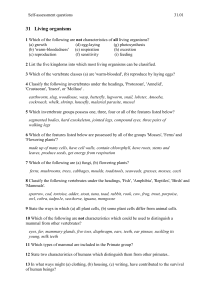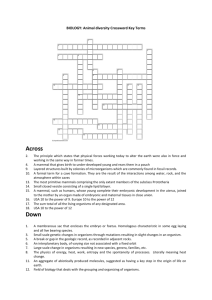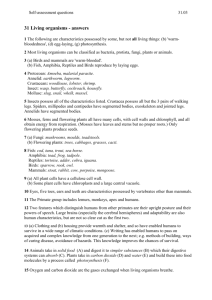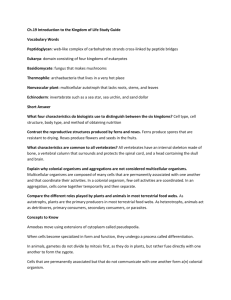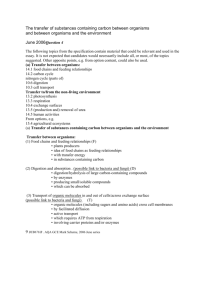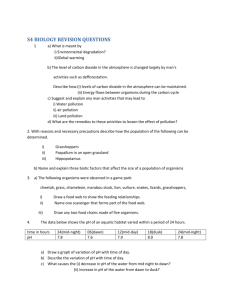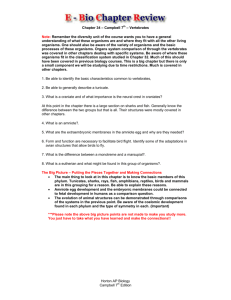Living Organisms Self-Assessment Questions
advertisement
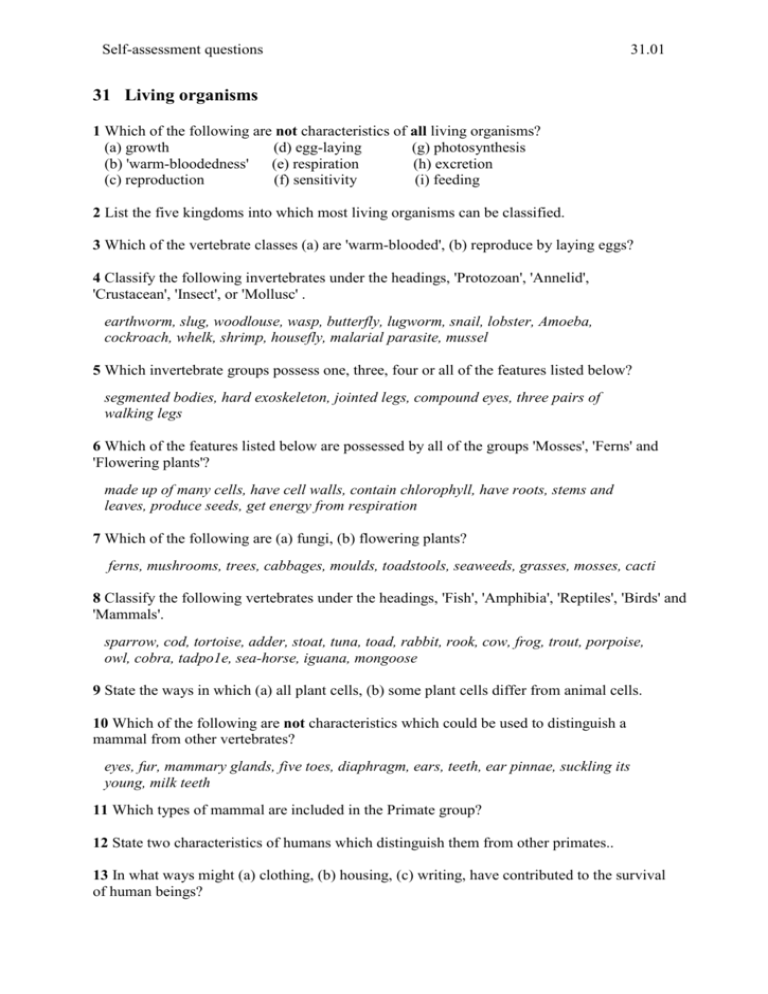
Self-assessment questions 31.01 31 Living organisms 1 Which of the following are not characteristics of all living organisms? (a) growth (d) egg-laying (g) photosynthesis (b) 'warm-bloodedness' (e) respiration (h) excretion (c) reproduction (f) sensitivity (i) feeding 2 List the five kingdoms into which most living organisms can be classified. 3 Which of the vertebrate classes (a) are 'warm-blooded', (b) reproduce by laying eggs? 4 Classify the following invertebrates under the headings, 'Protozoan', 'Annelid', 'Crustacean', 'Insect', or 'Mollusc' . earthworm, slug, woodlouse, wasp, butterfly, lugworm, snail, lobster, Amoeba, cockroach, whelk, shrimp, housefly, malarial parasite, mussel 5 Which invertebrate groups possess one, three, four or all of the features listed below? segmented bodies, hard exoskeleton, jointed legs, compound eyes, three pairs of walking legs 6 Which of the features listed below are possessed by all of the groups 'Mosses', 'Ferns' and 'Flowering plants'? made up of many cells, have cell walls, contain chlorophyll, have roots, stems and leaves, produce seeds, get energy from respiration 7 Which of the following are (a) fungi, (b) flowering plants? ferns, mushrooms, trees, cabbages, moulds, toadstools, seaweeds, grasses, mosses, cacti 8 Classify the following vertebrates under the headings, 'Fish', 'Amphibia', 'Reptiles', 'Birds' and 'Mammals'. sparrow, cod, tortoise, adder, stoat, tuna, toad, rabbit, rook, cow, frog, trout, porpoise, owl, cobra, tadpo1e, sea-horse, iguana, mongoose 9 State the ways in which (a) all plant cells, (b) some plant cells differ from animal cells. 10 Which of the following are not characteristics which could be used to distinguish a mammal from other vertebrates? eyes, fur, mammary glands, five toes, diaphragm, ears, teeth, ear pinnae, suckling its young, milk teeth 11 Which types of mammal are included in the Primate group? 12 State two characteristics of humans which distinguish them from other primates.. 13 In what ways might (a) clothing, (b) housing, (c) writing, have contributed to the survival of human beings? Self-assessment questions 31.02 Living organisms (continued) 14 Select the appropriate words from the list below to complete the following paragraph. Animals take in …… (A) ….. and digest it to …… (B) …..which their digestive systems can ……. (C) ….. Plants take in …… (D) ….. and …… (E) ….. and build these into food molecules by a process called …… (F) …... water, photosynthesis, dissolve, absorb, solid food, soil particles, carbon dioxide, simpler substances, air, respiration 15 Which two gases are exchanged when living organisms breathe? 16 (a) What is the distinction between ‘breathing’ and ‘respiration’? (b) What part do ‘ventilation’ and ‘gaseous exchange’ play in these processes? 17 In sexual reproduction, special cells called ….. (A) ….. fuse together to form a ….. (B) ….. which grows into a new ….. (C) ….. 18 Living organisms are sensitive. This means that when they receive a ………., they make a ……….. 19 The response made by a growing plant shoot to one-sided illumination is called ………………………………….
